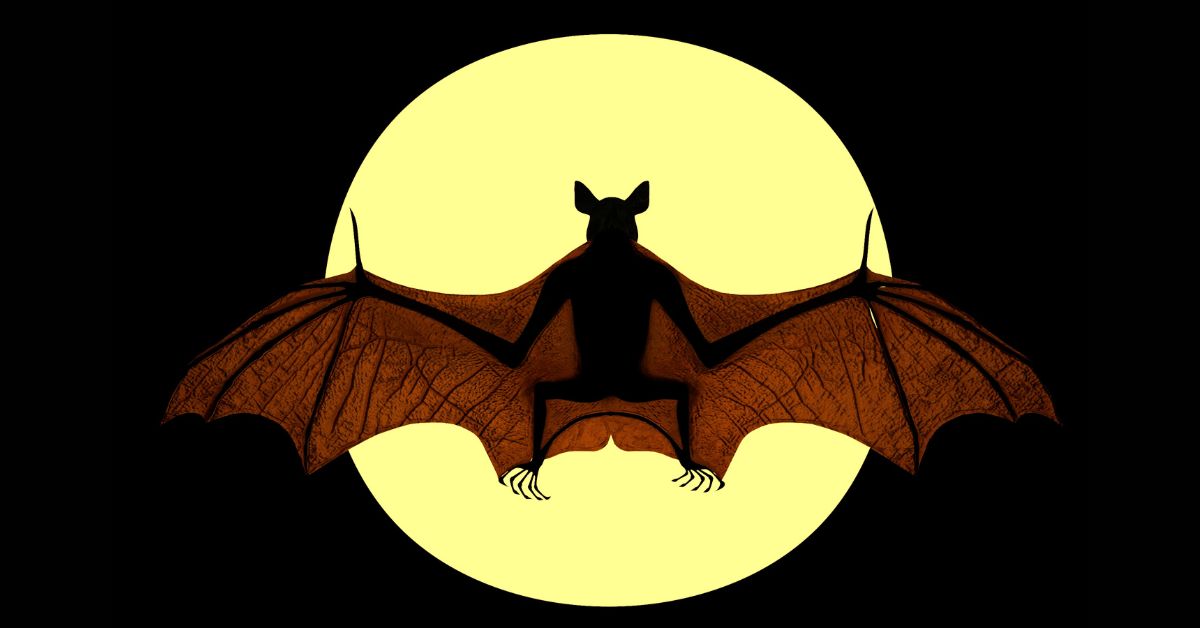When individuals think of bats, numerous imagine the notorious vampire bat—a animal encompassed by myths and misinterpretations. The title “Vampire Bat Realities: Find the Truth Behind These Strange Animals” recommends an investigation into the world of these baffling creatures. In this article, we will dive into the reality behind vampire bats, expose common myths, and reveal captivating realities around these interesting creatures.
What Are Vampire Bats?

These bats are a subset of bats known for their interesting bolstering propensities. Not at all like other bats that expend creepy crawlies or natural product, vampire bats bolster on blood. This behavior has earned them a infamous notoriety, but it’s fundamental to get it the truths behind their bolstering propensities and biology.
Sorts of Vampire Bats
There are three species of vampire bats:
- Common Vampire Bat (Desmodus rotundus): Essentially bolsters on the blood of warm blooded animals, counting livestock.
- Hairy-Legged Vampire Bat (Diphylla ecaudata): Lean towards the blood of birds.
- White-Winged Vampire Bat (Diaemus youngi): Too nourishes on fowl blood, frequently focusing on littler species.
Each species has adjusted extraordinarily to its bolstering propensities, making them unmistakable in behavior and physiology.
Life systems and Adaptations

These bats have a few special adjustments that help their survival:
Specialized Teeth and Tongue
Their teeth are sharp and planned for making little entry points in their prey’s skin. Their tongues are long and adaptable, permitting them to lap up blood efficiently.
Warm Sensors
These bats have specialized warm sensors in their nose that offer assistance them distinguish blood vessels close the surface of their prey’s skin. This adjustment is significant for finding the best zones to feed.
Anticoagulants
To avoid the blood from clotting whereas they nourish, vampire bats create anticoagulants in their spit. This substance guarantees a nonstop stream of blood, which can final for up to 30 minutes.
Point by point Life systems and Physiology

Echolocation and Navigation
These bats, like numerous other bat species, utilize echolocation to explore and find their prey. They emanate high-frequency sound waves that bounce off objects and return to the bat’s ears, permitting them to construct a mental outline of their environment. This capacity is significant for finding prey in the dark.
Blood Utilization Process
The bolstering prepare of vampire bats is complex and profoundly specialized. When a bat lands on its prey, it employments its sharp teeth to make a little cut. It at that point laps up the blood with its tongue, which is prepared with little, hook-like structures that offer assistance draw the blood into the bat’s mouth. The anticoagulants in the bat’s spit avoid the blood from clotting, permitting the bat to bolster efficiently.
Interesting Physiological Adaptations
These bats have advanced a few special physiological adjustments to back their blood-feeding lifestyle:
- Kidneys: Their kidneys are adjusted to handle the tall volume of liquid admissions and the tall protein substance of blood, which requires productive excretion of squander products.
- Digestive Framework: Their stomach related framework is optimized to prepare blood rapidly, extricating supplements and ousting squander efficiently.
Social Structure and Behavior

Perching Habits
These bats are social creatures that frequently perch in expansive colonies. They lean toward dull, separated areas such as caves, surrendered buildings, or empty trees. Perching together gives warmth and security from predators.
Social Intuitive and Grooming
Social intuitive are crucial for vampire bats. They lock in in preparing behaviors to keep up cleanliness and fortify social bonds. Common prepping too makes a difference in the conveyance of warm and can upgrade social cohesion inside the colony.
Blood Sharing and Reciprocity
These bats show a intriguing behavior known as “nourishment sharing.” When one bat is incapable to bolster, it may get blood from other colony individuals that have encouraged effectively. This complementary nourishing behavior is vital for the survival of people that might have missed out on a meal.
Vampire Bats and Human Health

Malady Transmission
While vampire bats are known carriers of illnesses, such as rabies, the chance of illness transmission to people is moderately moo. In any case, their nibbles can every so often transmit diseases to animals and other creatures. Investigate is continuous to get it and oversee the dangers related with these diseases.
Restorative Inquire about Contributions
The anticoagulants found in vampire bat spit have driven to noteworthy restorative progressions. Analysts have considered these compounds to create modern medicines for blood clotting disarranges. The most outstanding anticoagulant inferred from vampire bat spit is called “Draculin,” which is utilized in a few blood-thinning medications.
Preservation and Investigate Efforts

Dangers to Vampire Bats
These bats confront a few dangers, counting living space devastation, climate alter, and illness flare-ups. Deforestation and human infringement can disturb their characteristic perching destinations and bolstering grounds.
Preservation Initiatives
Conservation endeavors center on protecting the living spaces of vampire bats and observing their populaces. Organizations work to secure normal perching destinations and actualize techniques to relieve human-wildlife conflicts.
Investigate and Education
Ongoing investigate points to superior get it these bats’ environmental parts and their intelligent with other species. Instructive programs offer assistance raise mindfulness approximately the significance of these animals and scatter myths related with them.
Social and Verifiable Significance

Legends and Legends
These bats have been highlighted in different myths and legends all through history. The affiliation with vampire legend can be followed back to the early European vampire myths, which frequently portrayed blood-drinking animals. These myths have affected the depiction of vampire bats in advanced well known culture.
Logical Discoveries
Scientific investigation of these bats has driven to various revelations in areas such as developmental science, pharmaceutical, and behavior. Considers on their nourishing instruments and social structures proceed to give important bits of knowledge into bat science.
Nourishing Behavior
How Vampire Bats Feed
Contrary to prevalent conviction, these bats do not deplete their prey’s blood. They expend as it were a little amount—typically a few milliliters—per nourishing session. This behavior minimizes hurt to their has and makes a difference the bat keep up its health.
Bolstering Frequency
These bats require to nourish nearly each night due to their tall digestion system. A single bolstering session can final from 20 minutes to over an hour, depending on the bat’s starvation and the accessibility of blood.
Myths and Misconceptions

These bats are frequently misconstrued, driving to a few myths and misconceptions:
The Myth of Vampirism
Many individuals relate these bats with the legendary vampire, but these animals are distant from the powerful creatures delineated in legends. Their nourishing propensities are absolutely natural and basic for their survival.
Vampire Bats and Disease
While these bats can transmit maladies like rabies, the hazard to people is negligible. The essential concern is for animals, which can endure from frailty due to visit feeding.
Vampire Bats in Ecosystems
Part in Ecosystems
These bats play a vital part in their biological systems. By bolstering on blood, they offer assistance control the populace of different creatures and contribute to supplement reusing in their habitats.
Preservation Status
Most these bats species are not considered imperiled. Be that as it may, living space misfortune and illness can posture dangers to their populaces. Preservation endeavors center on securing their common living spaces and checking their health.
Vampire Bats in Culture
Vampire Bats in Prevalent Media
These bats have been included in different shapes of media, regularly as fearsome animals connected to frightfulness and powerful topics. This depiction has affected open recognition, contributing to the myths encompassing them.
Logical Investigate and Discovery
Scientific inquire about on these bats has extended our understanding of their science and behavior. Ponders on their anticoagulants, for illustration, have driven to therapeutic headways in blood-thinning treatments.
“Microbats Explained: Understanding Their Classification Systems”
FAQs
Q1: Do vampire bats truly drink human blood?
A1: These bats essentially bolster on animals, such as cattle and poultry. Human blood is seldom focused on, and vampire bat chomps are unprecedented in humans.
Q2: How long do vampire bats live?
A2: These bats ordinarily live for 9 to 12 a long time in the wild, in spite of the fact that a few people have been known to live longer in captivity.
Q3: Can vampire bats fly?
A3: Yes, these bats are competent of flight. They have adjusted well to flying and can travel a few miles in look of food.
Q4: How do vampire bats discover their prey?
A4: These bats utilize warm sensors in their nose to distinguish blood vessels in their prey. They too depend on their intense sense of hearing to find potential hosts.
Q5: Are vampire bats ensured by law?
A5: The security status of these bats shifts by locale. In a few regions, they are secured due to their environmental significance, whereas in others, they are subject to control measures to ensure livestock.
Conclusion
Vampire Bat Facts: Find the Truth Behind These Strange Animals offers a comprehensive see into the world of vampire bats. By isolating truth from fiction, we pick up a clearer understanding of these interesting animals and their part in the characteristic world. Whereas they may be covered in myths and misinterpretations, vampire bats are fundamental to their biological systems and give important bits of knowledge into developmental adjustments and restorative inquire about. Through proceeded consider and preservation endeavors, we can way better appreciate and ensure these baffling creatures.

